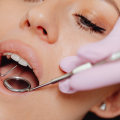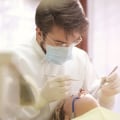Oral diseases are among the most prevalent health conditions globally, affecting individuals of all ages and significantly impacting overall well-being. While many people associate oral health with aesthetics, such as a bright smile, it is critical to understand that oral diseases can lead to pain, discomfort, and even serious systemic health issues if left untreated. From cavities and gum disease to more complex conditions like oral cancer, these issues underscore the importance of consistent oral hygiene and professional dental care at A+ Family Dentistry in Mira Mesa, California. Addressing oral diseases promptly is essential to maintaining both oral and general health.
Tooth Decay and Cavities
Tooth decay, also known as dental caries, is one of the most widespread oral diseases, affecting millions of people worldwide. It occurs when plaque, a sticky film of bacteria, builds up on the teeth and produces acids that erode the enamel. If not treated, the decay can progress deeper into the tooth, causing pain, infection, and even tooth loss. Cavities are most common in children and adolescents, but adults, especially those with receding gums, are also at risk. Fluoride treatments, regular brushing, and flossing are effective preventive measures against tooth decay, along with limiting the consumption of sugary and acidic foods.
Gum Disease
Gum disease, or periodontal disease, is another prevalent oral condition that can have severe consequences if left untreated. It begins as gingivitis, a mild form characterized by red, swollen, and bleeding gums. If not addressed, gingivitis can progress to periodontitis, a more serious condition that damages the soft tissue and bone supporting the teeth. Advanced periodontitis can result in tooth loss and has been linked to systemic health issues, such as cardiovascular disease and diabetes. Regular dental cleanings and good oral hygiene are essential for preventing and managing gum disease.
Oral Cancer
Oral cancer is a serious and potentially life-threatening condition that affects the lips, tongue, cheeks, floor of the mouth, and throat. Common risk factors include tobacco use, excessive alcohol consumption, and exposure to the human papillomavirus (HPV). Early symptoms of oral cancer may include persistent sores, lumps, or patches in the mouth, as well as difficulty swallowing or unexplained pain. Early detection is crucial for successful treatment, which is why regular dental checkups often include oral cancer screenings. Dentists play a critical role in identifying the signs of oral cancer and guiding patients toward appropriate care.
Oral Thrush
Oral thrush, or candidiasis, is a fungal infection caused by an overgrowth of Candida, a type of yeast naturally present in the mouth. It is more common in infants, older adults, and individuals with weakened immune systems. Symptoms include white patches on the tongue, inner cheeks, and roof of the mouth, as well as redness and soreness. Thrush can also develop in people who wear dentures or use inhaled corticosteroids for conditions like asthma. Treatment typically involves antifungal medications, and maintaining good oral hygiene can help prevent recurrence.
Dental Erosion
Dental erosion occurs when the enamel on the teeth wears away due to frequent exposure to acidic substances. Common causes include consuming acidic foods and beverages, acid reflux, and conditions such as bulimia that involve frequent vomiting. Symptoms of dental erosion include tooth sensitivity, discoloration, and a translucent appearance. While enamel cannot regenerate, the condition can be managed by reducing exposure to acids, using fluoride toothpaste, and seeking professional dental care to address any resulting damage.
Dry Mouth
Dry mouth, or xerostomia, is a condition in which the salivary glands do not produce enough saliva to keep the mouth moist. This can result from certain medications, dehydration, or medical conditions such as Sjögren’s syndrome or diabetes. Saliva plays a vital role in maintaining oral health by neutralizing acids, washing away food particles, and aiding digestion. Without adequate saliva, individuals are at an increased risk of tooth decay, gum disease, and oral infections. Managing dry mouth often involves staying hydrated, using saliva substitutes, and addressing the underlying cause of the condition.
Canker Sores and Cold Sores
Canker sores and cold sores are common oral conditions that, while not serious, can cause significant discomfort. Canker sores are small, shallow ulcers that develop on the soft tissues inside the mouth and are not contagious. They can be triggered by stress, certain foods, or minor injuries. Cold sores, on the other hand, are caused by the herpes simplex virus and are highly contagious. They usually appear as fluid-filled blisters around the lips and can be triggered by factors such as stress, illness, or sun exposure. While canker sores typically resolve on their own, cold sores may require antiviral treatments to manage outbreaks. Canker sores and cold sores are common oral conditions that, while not serious, can cause significant discomfort. Canker sores are small, shallow ulcers that develop on the soft tissues inside the mouth and are not contagious. They can be triggered by stress, certain foods, or minor injuries. Cold sores, on the other hand, are caused by the herpes simplex virus and are highly contagious. They usually appear as fluid-filled blisters around the lips and can be triggered by factors such as stress, illness, or sun exposure. While canker sores typically resolve on their own, cold sores may require antiviral treatments to manage outbreaks.
Conclusion
The most common oral diseases, including tooth decay, gum disease, oral cancer, and conditions like thrush and dry mouth, highlight the critical connection between oral health and overall well-being. Regular dental checkups, good oral hygiene practices, and early intervention are essential for preventing and managing these conditions. Professional dental care not only addresses existing issues but also provides the guidance and tools needed to maintain a healthy mouth. By prioritizing oral health, individuals can reduce the risk of complications and enjoy a higher quality of life.



